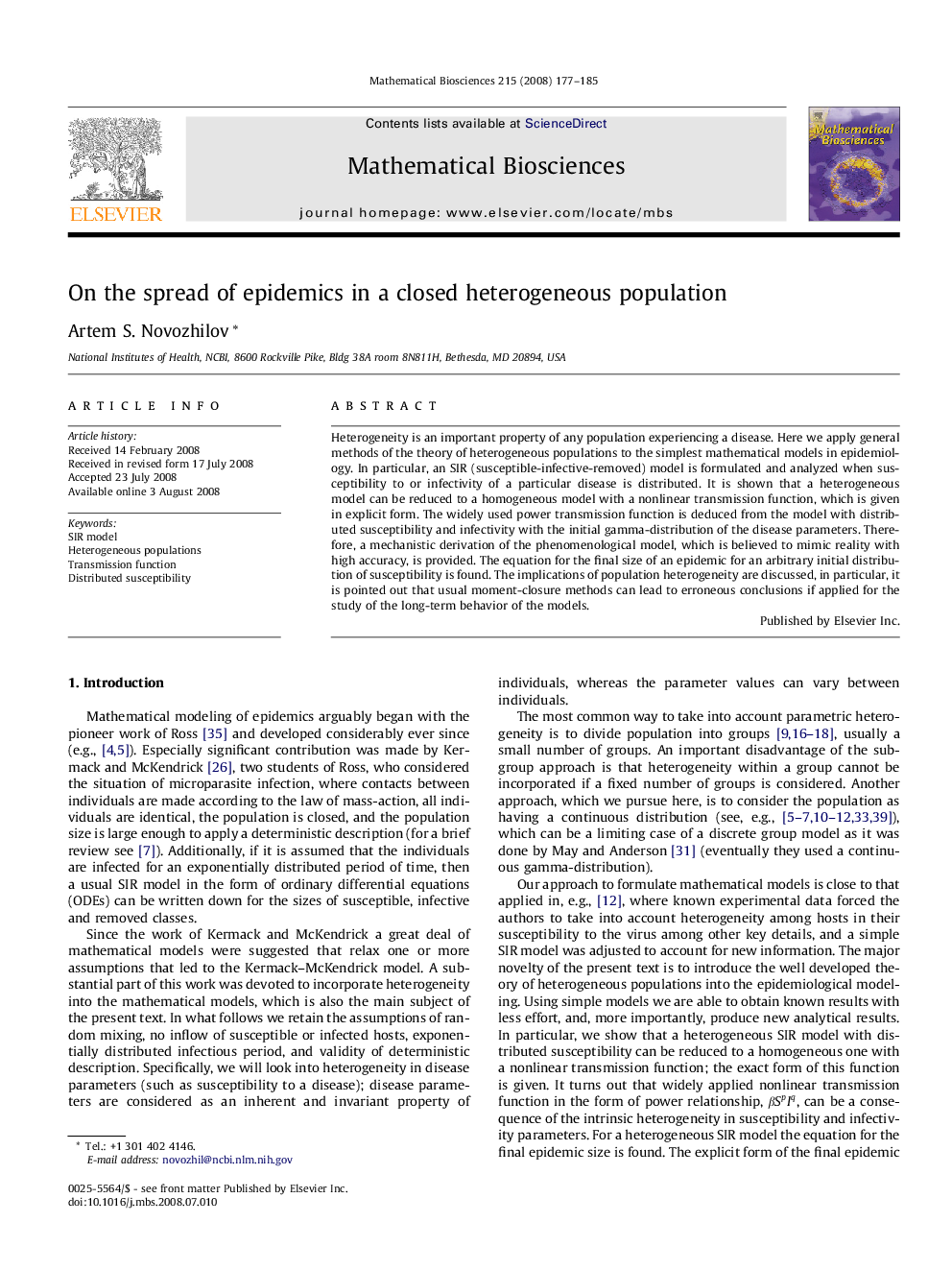| Article ID | Journal | Published Year | Pages | File Type |
|---|---|---|---|---|
| 4500737 | Mathematical Biosciences | 2008 | 9 Pages |
Heterogeneity is an important property of any population experiencing a disease. Here we apply general methods of the theory of heterogeneous populations to the simplest mathematical models in epidemiology. In particular, an SIR (susceptible-infective-removed) model is formulated and analyzed when susceptibility to or infectivity of a particular disease is distributed. It is shown that a heterogeneous model can be reduced to a homogeneous model with a nonlinear transmission function, which is given in explicit form. The widely used power transmission function is deduced from the model with distributed susceptibility and infectivity with the initial gamma-distribution of the disease parameters. Therefore, a mechanistic derivation of the phenomenological model, which is believed to mimic reality with high accuracy, is provided. The equation for the final size of an epidemic for an arbitrary initial distribution of susceptibility is found. The implications of population heterogeneity are discussed, in particular, it is pointed out that usual moment-closure methods can lead to erroneous conclusions if applied for the study of the long-term behavior of the models.
